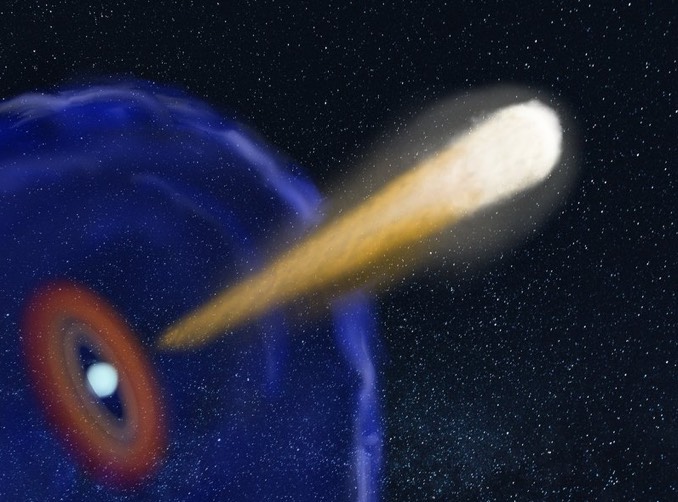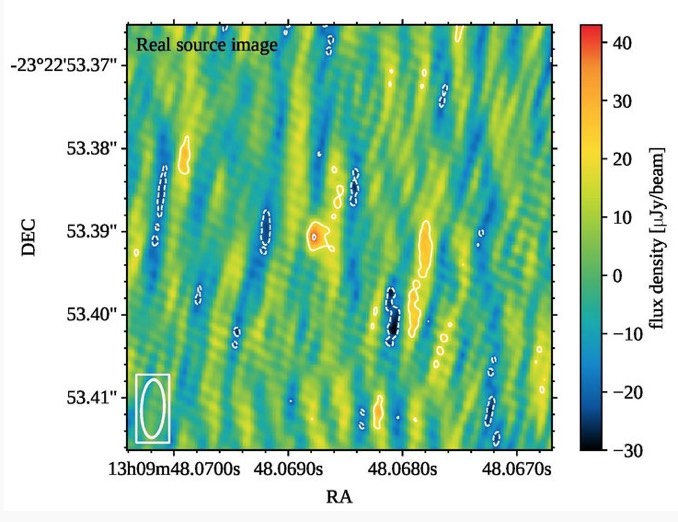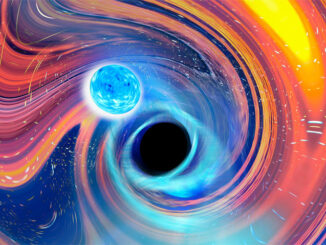
Astronomers studying the aftermath of the merger of two neutron stars, the first and so far only such merger detected by gravitational waves, have now spotted what appears to be an enormous jet of material blasting through the shell of debris blown into space by the collision.
The two neutron stars, the collapsed city-size cores of once massive suns, crashed together in a galaxy some 130 million light years from Earth, generating ripples in space – gravitational waves – that were detected on Earth in August 2017.
Since then, astronomers have been monitoring the aftermath across the electromagnetic spectrum to learn more about how these violent mergers, among the most explosive events in the cosmos, evolve and affect their local environments.
The collision blasted an enormous amount of material into space that formed an expanding shell of debris enclosing the merged neutron stars. The astronomers expected the collision to generated a powerful collimated jet, but it was not clear whether the outflow would be able to punch through the surrounding shell.
“There were two competing scenarios,” said Tiziana Venturi, a researcher with the Italian National Institute for Astrophysics (INAF). “In one case, the jet cannot break through the shell, instead generating an expanding bubble around the object. In the other, the jet is successful in penetrating the shell and then propagates further into space.”

Electronically combining radio telescopes in Europe, Africa, Asia, Oceania and North America, an international team of astronomers assembled a view of the merger site with a resolution equivalent detecting a person on the surface of the moon. Using that same analogy, the expanding shell of stellar debris would have the apparent size of a truck on the lunar surface.
“Comparing the theoretical images with the real ones, we find that only a jet could appear sufficiently compact to be compatible with the observed size,” said Om Sharan Salafia from INAF. The team calculated the jet carried as much energy as all the stars in the Milky Way contained in a volume less than one light year across.
More neutron stars are expected to be observed with increasingly sensitive gravitational wave detectors. Sándor Frey from the Konkoly Observatory in Hungary said the observations “will allow us to unveil the processes that take place during and after some of the most powerful events in the universe.”



